- Author: Kathy Keatley Garvey

Dragonflies, cabbage white butterflies, skippers, and honey bees especially drew his attention.
His choice of a career—entomologist, botanist, paleontologist, anthropologist, herpetologist, everything with an “ist”—“rested largely on what I could sneak into the house,” Grissell quipped, recalling that his mother wasn't terribly enthusiastic about bugs or snakes. In fact, she hated them. “But I could hide a lot more bugs in my bedroom than I could snakes—take my word on it!”
“I eventually gravitated to what was most abundant in my habitat, namely plants and bugs,” Grissell, would later write in his chapter, ‘City Toads and Country Bugs,” in Jean Adams' book, Insect Potpourri: Adventures in Entomology. “Of the two, insects fulfilled a more immediate need than did plants. After all chasing butterflies was a lot more stimulating than chasing dandelions.”
Born Aug. 10, 1944 in Washington, D.C., Eric lived in San Francisco from 1947 to 1952. His adventures led to his first published paid story ($2) in 1954 at age 12 in the San Francisco Examiner. “It was about a crawfish.”
E. Eric Grissell went on to receive his master's degree and doctorate in entomology from the University of California, Davis, completing his Ph.D. in 1973. Grateful for the advice, encouragement, and opportunities given him, he is now giving back to the university that mentored, molded and motivated him.
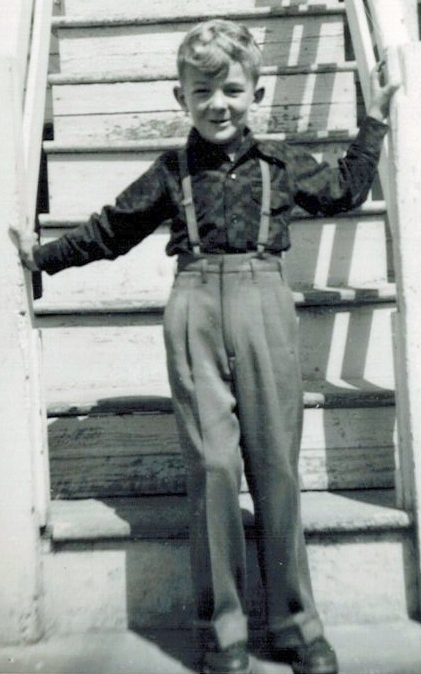
The entomology fund is geared for undergraduate and graduate students studying insect systematics, with preference for students associated with the Department of Entomology and Nematology's Bohart Museum of Entomology, named for his major professor, Richard M. Bohart (1913-2007).
The botany fund is in appreciation for the mentoring, advice and assistance Grissell received from UC Davis botanist John Maurice Tucker, “Dr. Oak” (1916-2008), professor and longtime director of the UC Davis Herbarium. (See more information about the herbarium and its founders).
“My thesis and dissertation dealt with parasitoid wasps that prey on gall-forming insects (some of which cause gall formation on oaks),” Grissell said. “Any botanist at Davis during the last half-century knows that Dr. Oak was the foremost authority on the oak genus at the time.” Tucker identified Grissell's specimens and “was always willing to help.”
Grissell received Sigma Xi and National Science Foundation grants to survey the western states for oak galls and reared parasitoids. Today many Grissell oak specimens are housed in the herbarium.
“I ended up essentially minoring in botany because I've always had an interest in plants,” Grissell said.
Fast forward to today. “The main reason I am supporting students in both the Plant Science and Entomology departments is that I received support when I needed it in the form of jobs from Richard Bohart (work study, research assistantship), much needed guidance and advice from John Tucker, and encouragement from both. Dick and his wife Margaret even housed and fed me for his last year of study.

“The Law Family Award is named in recognition of the moral support given by family members who never understood my attraction to bugs but opted not to place me in a mental institution where I would have been much better off,” he joked.
Following his UC Davis studies, Grissell accepted a position as a taxonomic entomologist for the Florida Department of Agriculture and Consumer Services until 1978. From 1978 to 2005, he worked as a research entomologist for the Systematic Entomology Laboratory, U.S. Department of Agriculture (USDA), located at the U.S. National Museum of Natural History. During his periods of employment, Grissell authored more than 100 papers, and served as editor of the Journal of Hymenoptera Research for seven years. Although retiring in 2005, he continues his work as a Smithsonian Institution research associate with the Museum of Natural History, and is a former adjunct associate professor at the University of Maryland.
Grissell authored several books published by Timber Press, including Bees, Wasps, and Ants: the Indispensable Role of Hymenoptera in Gardens (2010); Insects and Gardens, in Pursuit of a Garden Ecology, published in 2001 and recipient of two of the "Top 10" 2002 Garden Globe Awards presented by the Garden Writers Association of America -- one for Best Book and one for Best Writer; and another award from the American Horticultural Society); A Journal in Thyme(published in 1994); and Thyme on My Hands (published in 1987). He is currently writing a book on the history of garden zinnias. He hopes to finish the book, about three-fourths finished, by the middle of next year. “I've tried to make the book readable by including many odds and ends associated with the garden zinnia.”
In his book, Bees, Wasps and Ants, he writes: “Few insects are more important than bees, wasps, and ants. They maintain the garden's biological balance, fertilize vegetables, fruits, and flowers, and recycle nutrients within the soil. It's no exaggeration to say that a garden can't be understood without an understanding of its insects.”
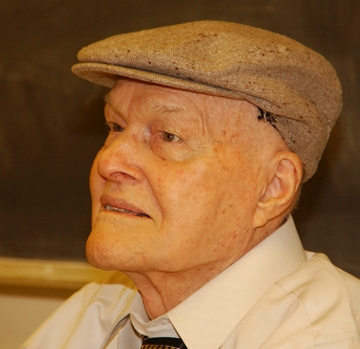
Grissell and fellow UC Davis entomologist Arnold Menke nominated Bohart for the International Society of Hymenopterists Distinguished Research Medal, which he received at a ceremony held May 15, 2006 in Briggs Hall. They also coedited an honorary edition of the Pan-Pacific Entomologist (vol. 59) on the occasion of Bohart's 70th birthday. “Doc Bohart” died Feb. 1, 2007 in Berkeley.
Menke, a decade older than Grissell, was a postgraduate student in the Richard Bohart lab when Grissell was an undergraduate. “I knew him because I helped Dick catalog wasps for his book,” Grissell recalled. “Arnold took a job with the Systematic Entomology Laboratory when he graduated and then a number of years later, I took a job in the same lab a few doors down the hallway in the U.S. National Museum. I lived near Arnold and we commuted to work together until he retired.“ Today they live about 60 miles from each other.
“Eric was one of a group of Doc Bohart's favorite students,” said Lynn Kimsey, director of the Bohart Museum of Entomology, professor of entomology at UC Davis, and one of Bohart's last graduate students. She received her doctorate from UC Davis in 1979 and joined the faculty in 1989. “Eric is an excellent insect taxonomist and his research and writings have always brought together his interest in insects and plants. His generosity with this scholarship will help support and encourage students who share these interests.”
- Author: Kathy Keatley Garvey

The honey bee garden owned and maintained by the UC Davis Department of Entomology and Nematology has received a $15,000 donation from the California State Society of the Daughters of the American Revolution.
State Regent Debra Jamison of Fresno, as part of her two-year fundraising project to support the troubled bee population, donated the funds to enhance the bee environment in the Häagen-Dazs Honey Bee Haven, a half-acre bee friendly garden located next to the Harry H. Laidlaw Jr. Honey Bee Research Facility on Bee Biology Road.
Jamison, the 2012-2014 state regent, presented the check March 28 at a “lunch-with-the-bees” celebration organized by the UC Davis College of Agricultural and Environmental Sciences. Some 125 DAR members, some from as far away as Chico and San Diego, dined beneath a canopy of olive trees bordering the road.
“We appreciate this more than we can say,” said Ed Lewis, professor and vice chair of the department--and whose mother belongs to DAR.
This was DAR's second check presentation in two years to the UC Davis Department of Entomology and Nematology. In 2013, Jamison presented a check for $30,000 for bee research to assistant professor Brian Johnson.
On behalf of the department, haven manager Christine Casey accepted the $15,000 check from Jamison and Karen Montgomery of Modesto, the state regent's project chair. Casey announced that some of the funds have already been used to purchase two benches, and other projects will include a shade structure in the Growers Grove section and more bee habitat.

Jamison adopted the motto, “Bees are at the heart of our existence” and vowed to support honey bee research and enhance honey bee environments to help the beleaguered bees.
Honey bees prefaced the American Revolutionary War (1765-1783) by 143 years. European colonists brought the honey bee to Jamestown colony, Virginia, in 1622. Descendants of the American Revolutionary War formed DAR in 1890.
“When the state regent's project was conceived, I never imagined that honey bees would be in the serious state they are in,” Jamison told the luncheon crowd. “I could not have imagined that this amazing insect would make the cover of Time magazine, or that the California DAR would be involved in trying to do something to help the most vital insect in the animal kingdom.”
“Our 114 chapters and 15 districts have worked diligently to educate members, children, and the public about the plight of bees,” Jamison said. “This outreach has been truly outstanding. Add to that the phenomenal fundraising efforts. I truly thought that when I brought this project before the members that they might think, ‘Eeeeeuuuu, creepy insect, and weird state regent.'

Jamison presented certificates of appreciation to Extension apiculturist Eric Mussen and communication specialist Kathy Keatley Garvey of the UC Davis Department of Entomology and Nematology for their work in helping DAR with the two-year project.
“Kathy is the first live body I talked to about a possible project at UC Davis,” Jamison said. “She was immediately excited and hooked me up with the resident researcher here at the time. Our members know that Kathy is an accomplished micro-photographer, and they have seen many of Kathy's photos because she has been so open to sharing them with our organization. We also thank her for publicizing the first phase of this project. Our members were so excited to read all about it on the internet!”
Next, she paid tribute to Extension apiculturist Eric Mussen, a member of the faculty since 1976. “Dr. Mussen, there is no way we could have put this project together without you and all of the information you provided,” she told him. “Your willingness to meet with me, and to give a tour of the lab and Honey Bee Haven was so appreciated and so kind of you. Thank you for answering all of my questions and emails over the last two years.”
“A little bee at the Central Valley Beekeepers Association--of which I am now a member-- told me you would be retiring this summer. My best wishes for a happy retirement and more personal time to spend with your bees!”

"Bee Patriotic” rally towels decorated each table. Last year Jamison's rally towels were lettered with “Bee-lieve in the Power of DAR."
All those attending the March 28th luncheon received a “I Beelong to DAR” recyclable grocery bag.
The crowd toured the haven, which was installed in the fall of 2009, and ended the day with bee presentations in the Laidlaw facility conference room.
Mussen talked about the life cycle of bees and the issues bees face: malnutrition, pesticides, pests, parasites, diseases and stress. Malnutrition, Mussen said, is a bigger problem now than colony collapse disorder (CCD), a mysterious malady characterized by adult bees abandoning the hive. An active colony of honey bees requires an acre-equivalent of mixed blooms, daily, to meet their nutritional needs.
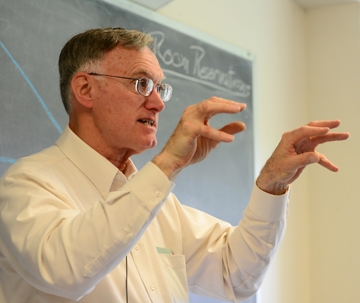
Mussen also warned that simply because certain pesticides are labeled for use in organic gardening does not mean that they are less dangerous for non-target insects, particularly pollinators. Also, insecticides that are watered into the soil and move from the roots, systemically throughout the plants, are secreted in the nectar and pollens when the treated plants bloom.
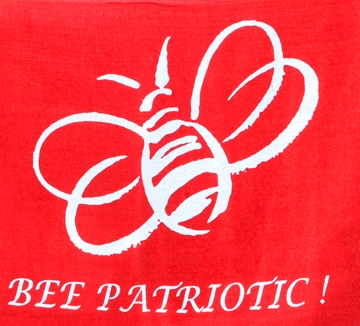
Johnson thanked DAR for the generous donation of $30,000 that he received last year. He said the financial support will cover a two-year period of graduate student research. His graduate student, Gerard Smith, researches the effect of pesticide exposure in the field on honey bee foraging behavior, and graduate student Cameron Jasper studies the genetic basis of division of labor in honey bees.




- Author: Kathy Keatley Garvey

No, not a donor organ, tree, or a smile.
In this case, the gift was for generations of honey bees at the Harry H. Laidlaw Jr. Honey Bee Research Facility at the University of California, Davis.
During a pollinator education program, employees of Valent U.S.A. Corporation, based in Walnut Creek, wanted to do something significant, something that would help the troubled bee population, and something that would promote team building.
So more than 270 employees engaged in a beehive building exercise, constructing 26 Langstroth bee hives. They recently delivered them to the Laidlaw facility where bee breeder-geneticist Michael “Kim” Fondrk, Extension apiculturist Eric Mussen and staff research associate/Laidlaw manager Billy Synk, all of the UC Davis Department of Entomology and Nematology, gratefully accepted them.
The gift is valued at $4290. Said Mussen: “This is an incredible gift."
“They did a good job,” said Fondrk, who provided workshop tips on how to build the bee boxes, using the right materials and specifications.
“We are thrilled to donate these hives to the Laidlaw facility,” said Meg Brodman, manager of marketing communications for Valent. “We recognize the incredible work being done by your organization and we thank you for your commitment to supporting the needs of America’s farmers through pollinator research, particularly in California, where we are also headquartered.”
“Pollinator safety,” she said, “continues to be a focus within our organization, and we at Valent, along with our counterparts in crop protection, are keenly focused on efforts that will support education and research for pollinator safety in agriculture.”
The bee boxes will be used beginning in the spring of 2014, just in time for the seasonal population build-up. In the peak season, each hive will hold some 60,000 bees. Brian Johnson, assistant professor, keeps his research bees at the apiary; his lab studies the genetics, behavior, evolution, and health of honey bees. Fondrk, who also keeps his bees in a nearby apiary, manages the research bees of Robert E. Page Jr., emeritus professor and former chair of the UC Davis Department of Entomology.
Johnson and associate professor Neal Williams, pollination ecologist, are co-directors of the Laidlaw facility.
Making the trek to UC Davis were Eric Tamichi, manager of registration and regulatory affairs; Linda Obrestad, regulatory division; and Brodman.
Brodman described Valent as a “growing crop protecting company, offering a diverse line of conventional and biorational products, including herbicides, insecticides, fungicide, seed protection and plant growth regulators that protect agricultural crops, enhance crop yields, improve food quality, beautify the environment and safeguard public health.”
As for the bees, a few buzzed down to investigate their new homes as the crew wheeled the boxes into the building.




- Author: Kathy Keatley Garvey

Allen-Diaz, vice president for UC Agriculture and Natural Resources (UC ANR), has agreed to participate in a stunt with thousands of buzzing honey bees clustered on either a UC ANR T-shirt or on a UC ANR banner in a project coordinated by the world-renowned bee wrangler Norm Gary, UC Davis emeritus professor of entomology.
Allen-Diaz holds several other titles: director of the Agricultural Experiment Station, director of Cooperative Extension, and professor and Russell Rustici Chair in Rangeland Management at UC Berkeley. But next spring, she will become “The Bee Lady” or “The Bee-liever,” surrounded by thousands of buzzing honey bees.
And, if the UC ANR administrator raises $5,000, she’s promised to eat insect larvae to promote awareness of alternative protein sources. (To donate, see http://promises.promiseforeducation.org/fundraise?fcid=269819)
Allen-Diaz has never intentionally been near a cluster of bees. “I have to say that most of the bee interactions that I’ve had in the past have been stepping on them barefoot on the lawn as a child in Edmonds, Wash.; jumping off a rock wall into a bee hive as a child – 11 stings on my neck and face; and trying to control meat-eating wasps (protecting her families’ hands, faces and legs) at our Oregon home,” she said.

Norm Gary said he will set up the project sometime in the spring, when the weather warms and the bees begin their annual population build-up.
Gary, who turns 80 in November, retired in 1994 from UC Davis after a 32-year academic career. He also retired this year as a bee wrangler and as a 66-year beekeeper, but “I’m coming out of retirement to help with this cause,” he said.
“Bees are not inclined to sting if they are well-fed, happy and content and are ‘under the influence’ of powerful synthetic queen bee odors — pheromones — which tend to pacify them,” Gary said.
While at UC Davis, he formulated a pheromone solution that is very effective in controlling bee behavior. Bees, attracted to pheromones, cluster on the drops of pheromones, whether it be a sign, a t-shirt or a plastic flower.
“Bees wrangled by this procedure have no inclination to sting,” he said. “Stinging behavior occurs naturally near the hive in defense of the entire colony not for the defense of the individual bee, because bees that sting die within hours. Using this approach I have had as many as a million bees clustered on six people simultaneously.”
“Most people fear bees,” Gary acknowledged. “They think bees ‘want’ to sting them. Wrong! They sting only when the nest or colony is attacked or disturbed or when they are trapped in a physical situation where they are crushed.”
Over the last four decades, Gary has trained bees to perform action scenes in movies, television shows and commercials. Among his credits are 18 films, including “Fried Green Tomatoes.” “My Girl,” “The X Files,” “Terror Out of the Sky,” “Invasion of the Bee Girls” and “Candyman” and the sequels. He appeared on more than 70 television shows, including the Johnny Carson and Jay Leno late night shows. He starred as the first guest on the TV show “That’s Incredible” and returned for four additional shows.
Gary holds a Guinness Book of World Records for most bees (109) in his mouth; he trained the bees to fly into his mouth to collect food from a small sponge saturated with his patented artificial nectar. He kept the bees inside his closed mouth for 10 seconds.
The retired bee scientist is the author of the popular book, “Honey Bee Hobbyist: The Care and Keeping of Bees,” now in its second printing. During his academic career, he published more 100 peer-reviewed scientific papers and four book chapters.
Gary, who received his doctorate in apiculture from Cornell University in 1959, is known internationally for his bee research. He was the first to document reproductive behavior of honey bees on film and the first to discover queen bee sex attractant pheromones. He invented a magnetic retrieval capture/recapture system for studying the foraging activities of bees, documenting the distribution and flight range in the field. His other studies revolved around honey bee pollination of agricultural crops, stinging and defensive behavior, and the effects of pesticides on foraging activities, among dozens of others.
A professional jazz and Dixieland musician, Gary is also known for playing the “B-Flat clarinet” while covered from head to toe with bees. He continues to play professionally in the Sacramento area—minus the bees.
“I’m looking forward to the big buzz next spring,” he said. “I promise it will be un-bee-lievable.”
Related links:
Biography of Barbara Allen Diaz
UC Promise for Education: What It's About

- Author: Kathy Keatley Garvey
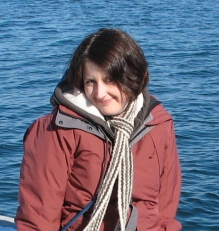
It will be recorded for later posting on UCTV.
“Whether in natural or agro-ecosystems, researchers are increasingly viewing positive interactions such as pollination in a broader context rather than as isolated pair-wise interactions,” Gillespie says. “In natural ecosystems, my research has explored how incidence of parasites and diseases of native bumble bees may affect pollination of plants in old-field meadows in Massachusetts. High incidence of certain parasites reduced pollination of bumble bee-dependent wild plants, suggesting that parasitism may impact pollination service to native plants and crops.”
“In a more applied context, I examined the effects of field management decisions, including pesticide use and irrigation practices, on pollination service in onion seed production in California. High insecticide use, even pre-bloom, as well as reduced irrigation negatively impact pollinator visitation in this crop, highlighting the importance of considering the indirect effects of management on the pollination process in agro-ecosystems.”
Gillespie, a postdoctoral researcher at UC Davis since 2011, received her bachelor’s degree in biology from Simon Fraser University, Canada. Her doctorate, from the University of Massachusetts, Amherst, was a joint degree in organismic and evolutionary biology, and entomology. Her doctoral dissertation, with major professor Lynn Adler, “sought to understand whether mutualisms can mediate trophic cascades, and whether the occurrence and strength of such cascades is affected by the interdependence between mutualists. I examined the context and mechanisms by which parasitoids and parasites of bumble bees can have indirect effects on pollination service to plants using a range of approaches, including field surveys, laboratory manipulations and theoretical modeling.”
As a postdoc in the Williams lab, she is applying these techniques to examine the mechanisms behind yield declines in hybrid onion seed production in California, with the goal of developing sustainable recommendations for producers.
Gillespie and Adler co-authored “Mutualisms in Trophic Cascades: Parasitism of Bumble Bees and Pollination Service to Plants,” pending publication in Ecology.
Her research on “Factors Affecting Parasite Prevalence among Wild Bumble Bees,” was published in Ecology Entomology, 2010. She has also published her work in the American Journal of Botany (“Variation in the Timing of Autonomous Selfing among Populations that Differ in Flower Size, Time to Reproductive Maturity, and Climate,” 2010) and Annals of the Entomological Society of America (“Laboratory Rearing of North American Tiger Beetles (Coleoptera, Carabidae: Cicindelinae,” 2011).
Pending publication in the Journal of Economic Entomology: “Insecticide Use in Hybrid Onion Seed Production Affects Pre- and Post-Pollination Processes,” by Gillespie, Neal Williams, Rachael Long and Nicola Seitz.
A recipient of several nationally competitive and specialty grants, Gillespie received a National Science Foundation Dissertation Improvement Grant in 2008, and a Natural Sciences and Engineering Research Council of Canada Post-Graduate Award in 2007. The California Garlic and Onion Growers’ Association awarded her a research grant in 2011.
Gillespie presented a seminar on “Indirect Effects of Insecticides on Pollination in Hybrid Onion Seed Production” at the 2012 meeting of the Pacific Branch of the Entomological Society of America. In 2009, her graduate student presentation on “Factors Affecting Parasitism in Bumble Bees” at the annual meeting of the Entomological Society of Canada and the Entomological Society of Manitoba won her the President’s Prize award for the best student talk.



